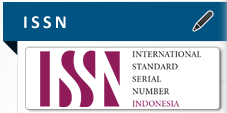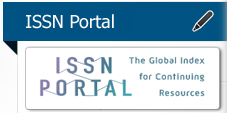EVALUASI PIGMEN KAROTENOID KARANG LUNAK SARCOPHYTON SP. SEBAGAI AGEN ANTIBAKTERI POTENSIAL MASA DEPAN
Abstract
Abstract
Infectious diseases can be treated using antibiotics. Source of antibiotic producer can come from marine microbe. Soft coral Sarcophyton sp., is reported to have bioactive compound alkaloids, steroids, and flavonoids. Carotenoid pigments of soft coral symbiont bacteria are potentially antibacterial compounds. This study aims to evaluate antibacterial activity of carotenoid pigment from soft coral symbiont Sarcophyton sp., to growth of pathogenic bacteria and to know difference antibacterial activity of carotenoid pigment at concentration 0,5%, 0,75%, and 1% with sink method.
Sample used were carotenoid pigment of methanol extract from soft coral symbiont bacteria Sarcophyton sp. Purposive sampling technique with soft coral criteria Sarcophyton sp., colored yellow. Sampling soft coral Sarcophyton sp., from waters of Pulau Cemara Besar, Karimunjawa with snorkeling at depth 2 meters. Carotenoid pigment acting as antibacterial extracted by maceration method using methanol solvent until all bacterial cells are pale. Carotenoids produced by symbiont bacteria have antibacterial activity against pathogenic bacteria Staphylococcus aureus ATCC 25923 with diameter average inhibitory zone at 0.5% concentration 0.678 cm, 0.75% concentration 0.978 cm, 1% concentration 1.416 cm and diameter inhibitory zone positive control amoxicillin trihydrate at 1.875 cm.
Keywords: Sarcophyton sp., carotenoid, antibacterial , Staphylococcus aureus
Abstrak
Penyakit infeksi dapat diobati dengan menggunakan antibiotik. Sumber penghasil antibiotik bisa berasal dari mikroba laut. Karang lunak Sarcophyton sp., dilaporkan memiliki kandungan senyawa bioaktif alkaloid, steroid, dan flavonoid. Pigmen karotenoid dari bakteri simbion karang lunak merupakan senyawa yang berpotensi sebagai antibakteri. Penelitian ini bertujuan untuk mengevaluasi aktivitas antibakteri pigmen karotenoid dari bakteri simbion karang lunak Sarcophyton sp. terhadap pertumbuhan bakteri patogen serta mengetahui perbedaan aktivitas antibakteri pigmen karotenoid pada konsentrasi 0,5 %, 0,75 %, dan 1 % dengan metode sumuran.
Sampel yang digunakan adalah ekstrak metanol pigmen karotenoid dari bakteri simbion karang lunak Sarcophyton sp. Teknik sampling yang digunakan adalah purposif dengan kriteria karang lunak Sarcophyton sp., berwarna kuning. Pengambilan sampel karang lunak Sarcophyton sp., dari perairan Pulau Cemara Besar, Karimunjawa dengan teknik snorkeling pada kedalaman 2 meter. Pigmen karotenoid yang berfungsi sebagai antibakteri diekstraksi dengan metode maserasi menggunakan pelarut metanol hingga seluruh sel bakteri berwarna pucat. Karotenoid yang diproduksi bakteri simbion tersebut memiliki aktivitas antibakteri terhadap bakteri patogen Staphylococcus aureus ATCC 25923 dengan rata – rata diameter zona hambat pada konsentrasi 0,5 % sebesar 0,678 cm, konsentrasi 0,75 % sebesar 0,978 cm, konsentrasi 1 % sebesar 1,416 cm serta diameter zona hambat kontrol positif amoksisilin trihidrat sebesar 1,875 cm.
Kata Kunci: Sarcophyton sp., karotenoid, antibakteri, Staphylococcus aureusFull Text:
PDFReferences
Chau V. M., Do C. T., & Dinh T. T. T. (2010). Carotenoid from The Soft Coral Sarcophyton elegans. J. Chem, 48 (5).
Cowan, M. (1999). Plant Product as Antimicrobial Agent. Clinical Microbiology Review, 12 (4), 564–582.
Desiana. (2000). Ekstraksi Pigmen Karotenoid dari Limbah Udang Windu. Skripsi. IPB.
Dworkin, M., Falkow S., Rosenberg E., Schleifer K.H., & Stackebrandt, E. (2006). The Prokaryotes A Handbook on The Biology of Bacteria Thirth Edition Volume 6. Singapore: Springer.
Entjang. (2003). Mikrobiologi dan Parasitologi Untuk Akademi Perawat dan Sekolah Tenaga Kesehatan yang Sederajat. Bandung: PT. Citra Aditia Bakti.
Fabricius, K. (1995). Slow Population Turnover In The Soft Coral Genera Sinularia and Sarcophyton On Mid- and Outer-Shelf Reefs of The Great Barrier Reef. Mar. Ecol. Prog. Ser, 126, 145-152.
Faulkner, D.J. (2008). Highlights of Marine Natural Products Chemistry. J. Nat Prod. Rep., 17, 1-6.
Gauithier, M.J. (1995). Alteromonas rubra sp. nov., a New Marine Antibiotic-Producing Bacterium. Int. J. Syst. Bacteriol, Oct 1976, 459–466.
Gross, J. (1991). Pigments in vegetables, Chlorophylls and carotenoids. New York: An avi Book, Van Nostrand Reinhold.
Hangstrom, A., Pihassi, J., & Zweifel, U. L. (2000). Biogeographical Diversity Among Marone Bacterioplankton. Aquat Microbiol Ecol, 21, 231–244.
Hardiningtyas, S.D., (2009). Aktivitas Antibakteri Ekstrak Karang Lunak Sarcophyton sp yang Difragmentasi dan Tidak Difragmentasi di Perairan Pulau Pramuka, Kepulauan Seribu. Fakultas Perikanan dan Ilmu Kelautan, Institut Pertanian Bogor.
Hodges, N. (2000). Handbook Of Microbiological Quality Control. New York : Taylor & Francis Inc.
Jawetz, Melnick, & Alberg. (2005). Mikrobiologi Kedokteran. Diterjemahkan oleh Nugroho, E., Edisi 20. Jakarta: Buku Kedokteran EGC.
Nybakken, J.W. (1982). Marine Biology : An Ecological Approach. Jakarta : Gramedia.
Pratiwi, S.T. (2008). Mikrobiologi Farmasi. Jakarta : Erlangga
Radjasa, O. K., Limantara, L., & Sabdono, A. (2009). Antibacterial activity of a pigment producing-bacterium associated with Halimeda sp. From land-locked marine lake Kakaban, Indonesia. J. Coast. Dev, 12, 100-104.
Reynold, James E.F., & Martindale. (1982). The Extra Pharmacopeia, Twenty-eight edition. London : The Pharmaceutical Press.
Sabdono, A. (2006). Biodegradation of chloropyrifos by a marine bacterium Bacilus firmus strain BY6 associated with branching coral Acropora sp. J. Coast. Dev, 10, 115–123.
Salisbury, F.B. & Ross, C.W. (1995). Fisiologi Tumbuhan Jilid 2. Bandung : Penerbit ITB.
Sawant, S.S., Youssef, D.T.A., Reiland, J., Ferniz, M., Marchetti, D., & El-Sayed, K.A. (2006). Biocatalytic and Antimetastatic Studies of the Marine Cembranoids Sarchopine and 2-epi-16-deoxysarchopine. J. Nat. Prod, 69, 1010 – 1013.
Tursch, B., Braekman, J.C., Daloze, D., & Kasin, M. (1978). Terpenoid from Coelenterata. In : Scheuer P.J.(ed.) Marine Natural Products, Chemical and Biological Perspecture II. Academic Press N.Y., 247 – 296.
Winarno, F.G. (2002). Kimia Pangan dan Gizi. Jakarta : PT Gramedia Pustaka Utama
DOI: https://doi.org/10.26751/ijf.v2i1.414
Refbacks
- There are currently no refbacks.
Copyright (c) 2018 Indonesia Jurnal Farmasi
Published by LPPM Universitas Muhammadiyah Kudus
Jl. Ganesha Raya No.I, Purwosari, Kec. Kota Kudus, Kabupaten Kudus, Jawa Tengah 59316
Indonesia Jurnal Farmasi indexed by

This work is licensed under a Creative Commons Attribution-ShareAlike 4.0 International License.





